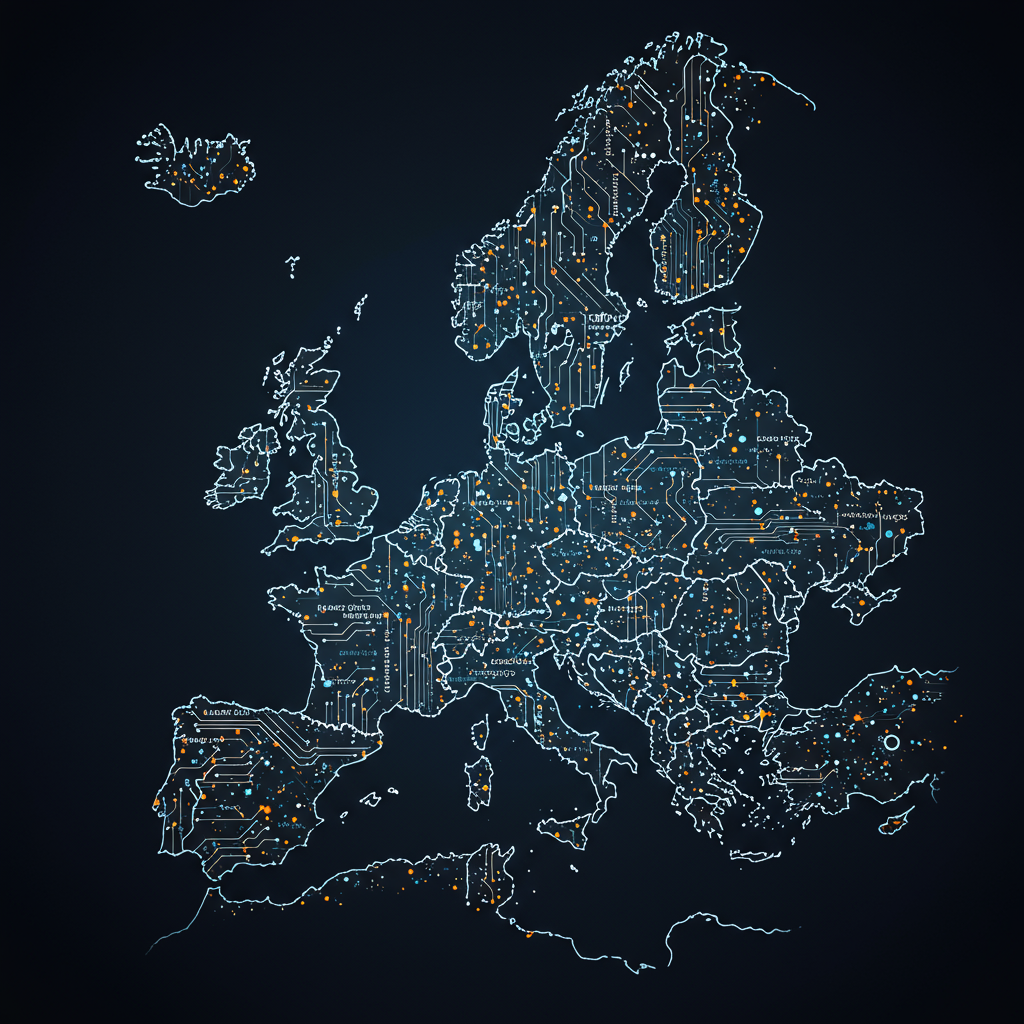Navigating the complexities of modern life and the competitive landscape of business often feels like facing unpredictable challenges. Whether it’s a personal setback or a market disruption, success rarely comes from a single approach. Instead, thriving, especially under pressure, requires a dynamic blend of seemingly opposite forces: strategic vision and tactical execution, logical analysis and intuitive insight, raw computation and simple, effective heuristics.
How do some individuals and organizations consistently overcome obstacles and achieve their goals even when conditions are unfavorable? They understand the profound connection between the big picture and the immediate action. They leverage both the calculated “science” and the insightful “art” of decision-making and execution. This article explores how mastering this powerful synergy can unlock your potential in both your personal and professional endeavors.
The Dual Forces: strategy and tactics Defined
At its core, strategy is about the “why” and the “what.” It defines your long-term goals, identifies the path to get there, and allocates resources accordingly. Think of it as drawing the map for your journey. A strong strategy provides direction and a framework for decision-making, ensuring that individual actions contribute to a larger purpose. Without strategy, you might be busy, but you won’t necessarily be moving towards a meaningful destination.
Tactics, on the other hand, are the “how,” “when,” and “where.” They are the specific actions, maneuvers, and steps you take on the ground to execute your strategy. If strategy is the map, tactics are the specific routes, turns, and modes of transport you use to navigate it. Effective tactics are agile and responsive, adapting to changing conditions on the ground while staying aligned with the strategic objective.
Why Strategy Needs Tactics (and Vice Versa)
A brilliant strategy remains just an idea without effective tactical execution. It’s like having a perfect blueprint but no construction crew. Conversely, tactical activity without a guiding strategy can lead to wasted effort, confusion, and ultimately, failure. Imagine building random walls without a house plan – lots of work, no usable structure. The most successful individuals and businesses excel at weaving these two together. Strategy provides the overarching direction, while tactics provide the flexible means to move forward effectively moment-to-moment.
Logic, intuition, and Heuristics in Decision Making
Decision-making is central to both strategy and tactics. Here too, we see a blend of analytical and less formal approaches. Logic and computation rely on data, analysis, calculations, and reasoned arguments. This scientific approach seeks objective truth and predictable outcomes based on available information. It’s essential for understanding complex systems, evaluating risks, and planning based on evidence.
Intuition and heuristics represent a different kind of intelligence. Heuristics are mental shortcuts or rules of thumb based on experience and pattern recognition. Intuition is a more subconscious process, often described as a gut feeling, that synthesizes vast amounts of information and experience rapidly. While less transparent than pure logic, intuition and heuristics can be invaluable for quick decisions in uncertain environments or for spotting opportunities that data alone might not reveal.
Bridging the Gap: Analytical Rigor and Insight
Neither logic nor intuition is sufficient on its own. Over-reliance on pure logic can lead to “analysis paralysis,” where endless data prevents action. It can also miss novel solutions or human factors that data doesn’t capture. Relying solely on intuition can be reckless, leading to impulsive decisions based on biases or incomplete information.
The mastery lies in integration. Use logic and data to inform your understanding, analyze consequences, and test assumptions. Then, layer in intuition and experienced-based heuristics to make faster decisions when needed, identify subtle patterns, or evaluate factors difficult to quantify. This blended approach allows for robust planning and flexible, insightful execution.
Embracing Uncertainty: Resilience vs. Antifragility
Life and business are filled with unexpected challenges, sometimes referred to as “Black Swan” events – rare, high-impact occurrences. Traditionally, the focus has been on building resilience: the ability to withstand shocks and return to your original state. Resilience is vital; it helps you bounce back from setbacks.
Antifragility, a concept popularized by Nassim Nicholas Taleb, goes beyond resilience. An antifragile system doesn’t just survive chaos and uncertainty; it actually gets stronger from it. Think of the mythical Hydra: cut off one head, and two grow back. Building antifragility involves creating systems, strategies, and personal approaches that benefit from volatility, stress, and shock.
Cultivating Antifragility Through Blend
How does the strategy-tactics-logic-intuition blend contribute to antifragility?
Strategic Flexibility: An antifragile strategy doesn’t rely on a single rigid plan but incorporates adaptability and redundancy. It anticipates that things will go wrong.
Tactical Agility: Being able to quickly adjust tactics in response to unforeseen circumstances is key to benefiting from disruption.
Data & Experimentation: Using data to constantly test and learn (science) combined with the intuition to try novel approaches (art) allows you to discover what works under pressure.
Distributed Systems: Whether it’s diversified investments, decentralized teams, or varied skill sets, distributing resources prevents single points of failure and creates opportunities for growth when one area is stressed.
By embracing volatility and using a combined analytical and intuitive approach to guide flexible strategies and agile tactics, you build systems that don’t just endure challenges but leverage them for growth.
Applying the Blend in Business Contexts
Let’s consider practical business applications. A company’s growth strategy might involve entering a new market. This requires extensive market research (logic/data), understanding cultural nuances (intuition/heuristics), and developing a phased entry plan (strategy). The tactical execution involves specific marketing campaigns, sales force training, logistics setup, and initial product rollouts. Success hinges on the strategy being sound and the tactical steps being executed effectively, with constant feedback loops using both data and qualitative observations.
Managing competition, like the high-stakes chess matches between grandmasters, requires deep strategic planning about opponent tendencies and potential lines of attack (logic/analysis). However, successful play also demands tactical calculation several moves ahead, intuitive understanding of board dynamics, and the ability to adapt plans instantly based on the opponent’s unexpected moves (heuristics/intuition).
Building an antifragile supply chain involves strategic diversification of suppliers and routes (redundancy). Tactically, it means having contingency plans for disruptions and the ability to quickly reroute shipments based on real-time data and expert judgment.
Applying the Blend in Personal Life
The same principles apply to personal growth and success. Planning a career path (strategy) involves identifying long-term goals, assessing skills, and determining necessary steps. The daily tactics involve networking, applying for specific jobs, acquiring new skills, and managing your time effectively. Navigating financial goals requires logical budgeting and investment analysis, balanced with intuitive risk assessment and patience.
Facing personal Goliaths – significant challenges like health issues, relationship problems, or major setbacks – requires both strategic perspective (maintaining hope, seeking long-term solutions) and immediate tactical actions (seeking medical help, having difficult conversations, breaking down problems into solvable steps). Resilience helps you cope; antifragility helps you learn and grow stronger from the experience.
Developing new skills is another area. Strategically, you identify why a skill is important and how it fits into your life goals. Tactically, you practice daily, seek feedback, and find resources. Using data might track your progress (practice hours, test scores), while intuition helps you identify how you learn best or when to pivot to a different approach.
Frameworks for Blending Art and Science
Cultivating this blend isn’t accidental; it requires conscious effort and practice.
- Define Your Strategy Clearly: What are your big goals? Why do they matter? What resources do you have? What are the major potential obstacles?
- Plan Your Tactics, But Stay Flexible: Outline the specific actions needed. However, build in review points and be ready to change course based on new information or unexpected results.
- Embrace Data AND Seek Insight: Use data to understand the situation and measure progress. But also talk to people, trust your trained intuition, and look for patterns that aren’t immediately obvious in spreadsheets.
- Learn from Both Success and Failure: Analyze why things worked or didn’t work, using both objective data and subjective reflection. This builds your library of heuristics.
- Cultivate a Learning Mindset: Stay curious and adaptable. The ability to learn quickly is perhaps the most critical tactical skill in an uncertain world.
- Practice Breaking Down Problems: Large strategic challenges are less daunting when broken into smaller, manageable tactical steps.
By consciously integrating these different ways of thinking and acting, you move beyond rigid plans or chaotic reactions towards a more effective and resilient way of navigating complexity.
Frequently Asked Questions
What’s the main difference between strategy and tactics?
Strategy defines your long-term goals and overall plan (the “what” and “why”), providing direction. Tactics are the specific actions and steps you take in the short term to execute that plan on the ground (the “how,” “when,” and “where”). Strategy is the map, tactics are the travel methods.
How can I improve my ability to blend logic and intuition?
Start by using data and analysis to understand a situation as much as possible. Then, consider your past experiences and gut feelings about potential outcomes. Make a decision, then use feedback (data and observation) to see how well the outcome matched your logic and intuition, learning to calibrate your judgment over time. Actively seek different perspectives.
Why is antifragility better than just being resilient?
Resilience helps you bounce back to your original state after a shock or challenge. Antifragility means you don’t just recover; you actually get stronger, improve, or benefit from the stress, volatility, and uncertainty. It’s about turning obstacles into opportunities for growth.
Conclusion
The path to success in life and business is not a straight line guided by a single principle. It requires a dynamic interplay between the grand design of strategy and the granular reality of tactics, between the rigorous analysis of logic and the rapid insights of intuition and heuristics. By consciously blending these approaches, embracing uncertainty, and striving for antifragility, you equip yourself to not only face challenges but to leverage them. Mastering this art and science is the key to thriving, even under the most unfavorable conditions.




